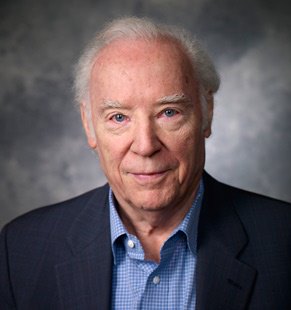
Translation and Reading
by Rainer Schulte
By its very nature, translation links theory with practice. Furthermore, Translation Studies bridges the gap between literary history, linguistics, semiotics, and aesthetics. The study of translation as well as the act of translation are always concerned with the reconstruction of a process rather than with the description of a particular content. Translation emphasizes the “how” and not the “what.” What processes do I have to initiate to transfer a situation from a source language text into the new language? How did the author create a particular atmosphere in a poem or a fiction piece and what methodologies does the translator have to develop to transplant these atmospheres into another language? The reconstruction of processes demands the invention of methodologies, and the act of translation provides us with an opportunity to explore the possibilities of these methodologies.
Like critical interpretation, translation endeavors begin with the act of reading. Therefore, it is opportune to rethink the efforts that go into the act of reading and how the translation perspective modifies and directs our reading processes. Hans Georg Gadamer, in his work “Wieweit schreibt Sprache das Denken vor?” (“To What Extent Does Language Prescribe Thinking?”), succinctly expresses the relationship between reading and translating in the following manner: “Lesen ist schon Ubersetzen und Ubersetzen ist dann noch einmal Ubersetzen…Der Vorgang des Ubersetzens schliesst im Grunde das ganze Geheimnis menschlicher Weltverstandigung und gesellschaftlicher Kommunikation ein.” (“Reading is already translation, and translation is translation for the second time…The process of translating comprises in its essence the whole secret of human understanding of the world and of social communication.”)
Contrary to the critical inquiry of a text, which frequently assesses, describes, and evaluates the implications of content in a work, the translator/reader focuses his/her attention on the word and sentence as process, as possibilities toward meanings. The translator is also less likely to succumb to the impossibility of experiencing a literary work because the mechanisms of media have overloaded a work with too much information and publicity. A genuine experience of the Mona Lisa is perhaps no longer possible, since the ritual of viewing the painting has been degraded to the level of kitsch.
“Reading is already translation, and translation is translation for the second time…The process of translating comprises in its essence the whole secret of human understanding of the world and of social communication.”
– Hans Georg Gadamer
“Reading is already translation.” Through the process of reading, we the readers are transplanted into the atmosphere of a new situation that does not build just one clearly defined reality, but, rather, possibilities of various realities. The reader is left with various options that he or she can interpret within the context of that atmosphere. The reader/translator reestablishes at every step of his or her work the inherent uncertainty of each word, both as isolated phenomenon and as semiotic possibility of a sentence, paragraph, or the context of the entire work. The rediscovery of that uncertainty in each word constitutes the initial attitude of the translator. Reading becomes the making of meaning and not the description of already-fixed meanings. As the imaginative text does not offer the reader anew comfortable reality but, rather, places him or her between several realities among which he or she has to choose; the words that constitute the text emanate a feeling of uncertainty. That feeling, however, becomes instrumental in the reader/translator’s engagement in a continuous process of decision-making. Certain choices have to be made among all these possibilities of uncertain meanings. Whatever the translation decision might be, there is still another level of uncertainty for the reader/translator, who continues the process of reading not only within the text but even beyond the text. This proliferation of uncertainties must be viewed as one of the most stimulating and rewarding results that the reader/translator perspective finds in the study and experience of the text. Reading as the generator of uncertainties, reading as the driving force toward a decision-making process, reading as discovery of new interrelations that can be experienced but not described in terms of a content-oriented language.
Reading from a translator’s point of view represents a continuous process of opening up new possibilities of interactions and semantic associations. Whatever questions the translator asks with respect to his/her involvement in a text, these questions have no prefigured answers that might be based on information brought to the text from the outside or based on clearly defined statements of context. In the translation process there are no definitive answers, only attempts at solutions in response to states of uncertainty generated by the interaction of the semantic fields and sounds of the words. Reading institutes the making of meanings through questions in which the possibility of an answer results in another question: What if?
In that respect, translation-reading has much in common with the performer’s attitude toward the work. Without Erlebnis (experience) the performance of a piece falls flat. At all times, the performer internalizes that which he or she performs. He or she is inside the work, and every note or word becomes a new possibility in the moment of its performance. Similarly, the translator/reader makes the reading activity a process in which each word begins to assume possible semantic associations. The reader/translator approach never becomes static.
Applying the translator’s eye to the reading of a text changes our attitude toward the reading process by dissolving the fixity of print on a page into a potential multiplicity of semantic connections. The words on the page represent only a weak reflection of the situations that the author intended to express. The translator/reader considers the word a means to an end, the final destination of which can never be put into the limitations of static descriptions.
The methodologies of translation can therefore be used to reactivate the act of reading as a dynamic process that engages the reader in the Erlebnis of the literary work.

About the Author
Rainer Schulte is the editor of Translation Review. He is the founder of the Center for Translation Studies at The University of Texas at Dallas and co-founder of the American Literary Translators Association.